For those seeking a natural, sustainable approach to shedding extra weight while improving digestive function, one often overlooked solution lies in something remarkably simple: fiber. Understanding how much fiber per day for weight loss is right for you not only supports gut health and appetite regulation but also influences overall metabolic efficiency. As research continues to affirm the benefits of dietary fiber in weight management, it becomes essential to explore the science behind fiber’s impact, optimal intake recommendations, and strategies for seamlessly integrating fiber into everyday eating habits.
You may also like: The Ultimate Guide to Gut Healthy Meals: Best Meals for Gut Health and Nourishing Recipes You’ll Love
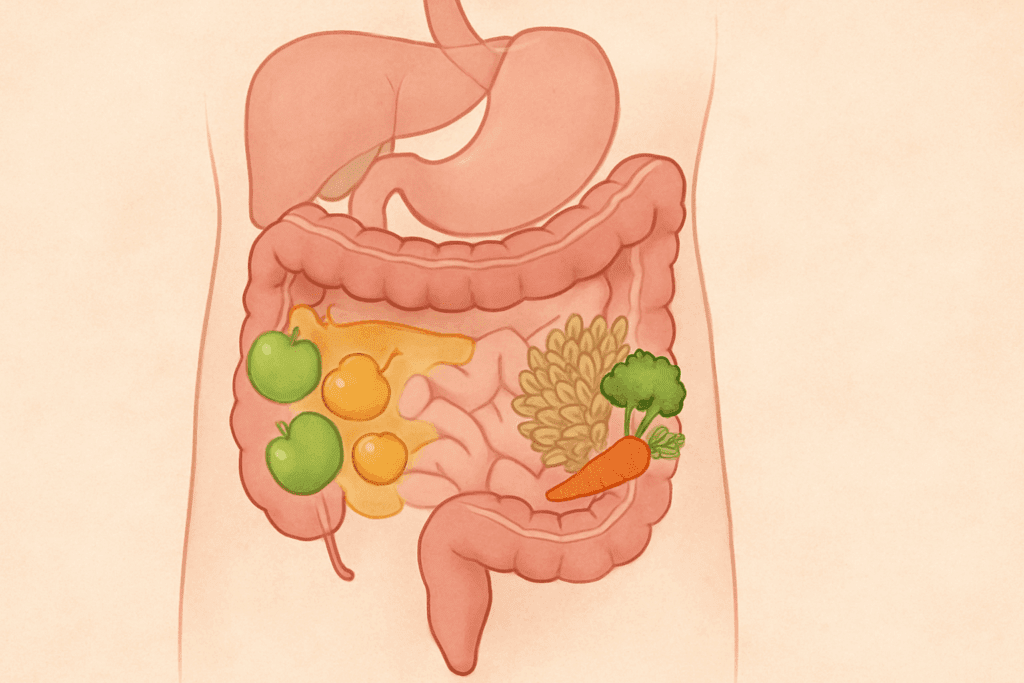
Understanding Fiber: The Unsung Hero of Digestive Wellness
Dietary fiber, found predominantly in plant-based foods, is a complex carbohydrate that the body cannot digest. Instead of being broken down and absorbed like sugars or starches, fiber passes relatively intact through the digestive system, playing a crucial role in maintaining gut motility, regulating blood sugar, and reducing cholesterol levels. It exists in two primary forms: soluble fiber, which dissolves in water to form a gel-like substance that slows digestion, and insoluble fiber, which adds bulk to the stool and aids in regular bowel movements. Both types are essential for comprehensive gut health and contribute uniquely to weight control.
Soluble fiber, found in foods like oats, beans, apples, and citrus fruits, helps manage blood glucose levels and prolongs feelings of fullness, making it an effective aid in reducing caloric intake. Insoluble fiber, abundant in whole grains, nuts, and vegetables, prevents constipation and supports detoxification by promoting the efficient movement of food through the intestines. Together, these fibers contribute to a balanced microbiome and enhanced nutrient absorption. More importantly, they create the physiological foundation for a high fiber diet for weight loss.
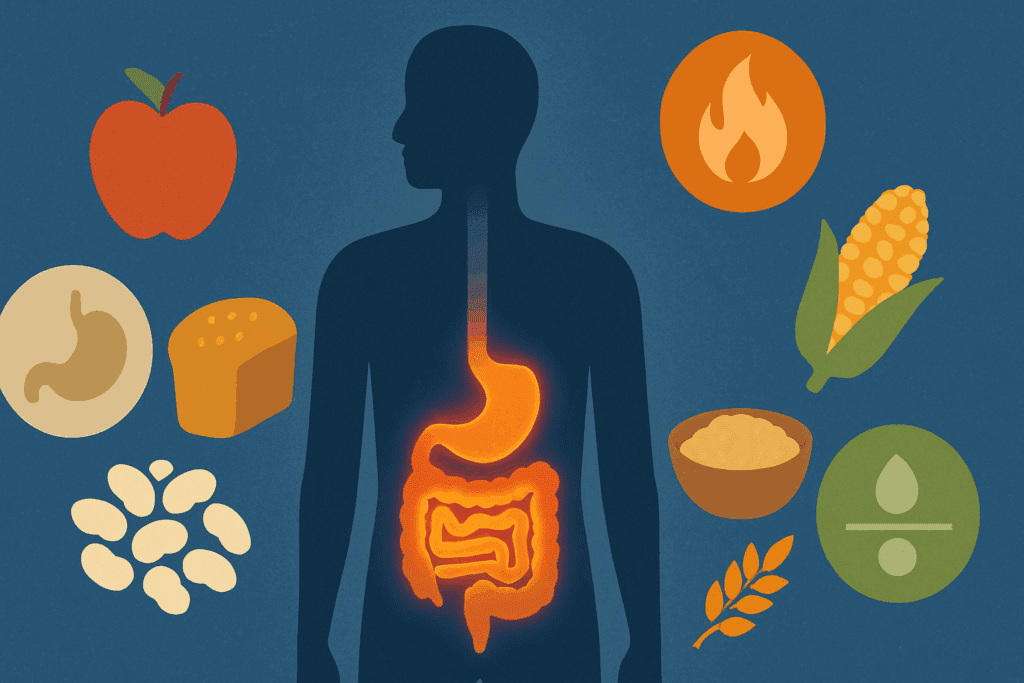
How Does Fiber Help With Weight Loss? The Science Behind Satiety and Metabolism
One of the most compelling explanations for fiber’s weight-regulating effects lies in its ability to increase satiety. When fiber-rich foods are consumed, they expand in the stomach and take longer to digest. This delay in gastric emptying sends prolonged fullness signals to the brain, decreasing the likelihood of overeating or snacking between meals. For individuals who struggle with portion control or emotional eating, increasing fiber intake can significantly alter behavior around food.
Furthermore, high fiber weight loss diets have been associated with more gradual and consistent reductions in body fat over time. By moderating blood sugar levels, fiber prevents the spikes and crashes that can trigger cravings for high-sugar, high-fat foods. This effect also plays a role in insulin sensitivity, a key factor in preventing metabolic conditions such as type 2 diabetes. In addition to regulating appetite and blood glucose, dietary fiber good for weight loss works by nourishing beneficial gut bacteria, which in turn influence fat storage and hormonal balance.
Research indicates that individuals who meet or exceed the recommended fiber intake tend to have lower body mass indexes (BMIs) and are less likely to gain weight over the years. This correlation underscores the importance of integrating fiber not only as a short-term strategy but as a long-term component of a healthy, balanced lifestyle.
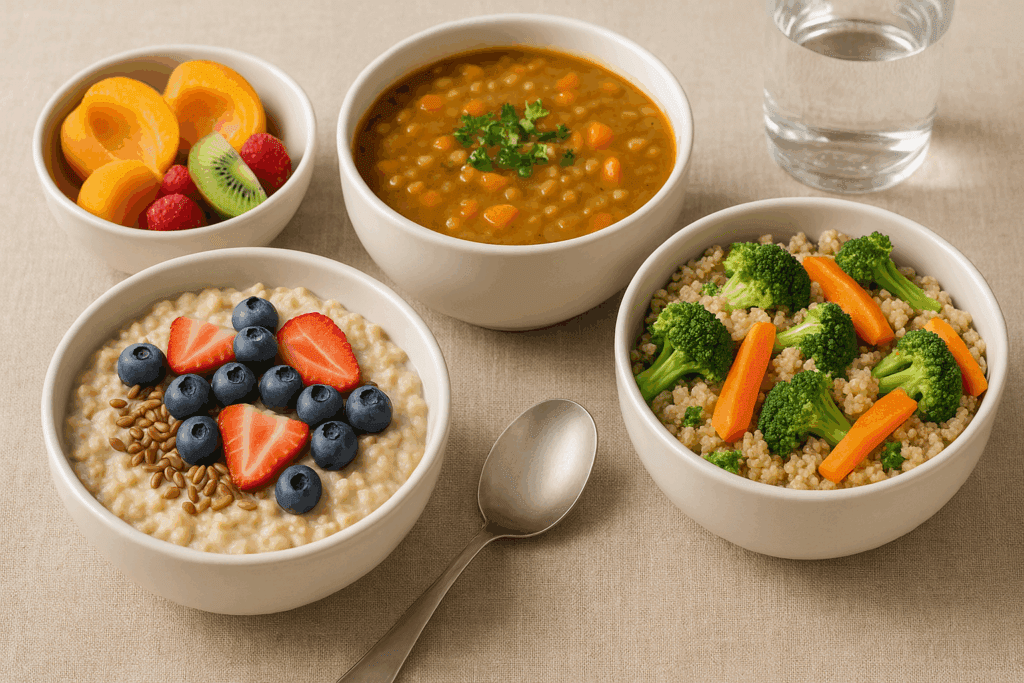
How Much Fiber Per Day for Weight Loss: Finding Your Personalized Target
Determining how much fiber per day for weight loss is ideal depends on several factors, including age, sex, activity level, and dietary patterns. The general recommendation by health authorities such as the Institute of Medicine is 25 grams per day for adult women and 38 grams per day for adult men. However, for weight loss purposes, some studies suggest aiming slightly higher—closer to 30 grams of fiber per day—to maximize satiety and metabolic benefits without overwhelming the digestive system.
It’s important to note that a sudden increase in fiber without adequate hydration can lead to bloating or gastrointestinal discomfort. Therefore, a gradual progression in fiber intake is recommended, especially for individuals who currently consume less than 15 grams daily. This strategic ramp-up allows the gut microbiome to adapt and promotes more sustainable digestive comfort. Teens, for instance, are encouraged to consume about 16 grams per day as a starting benchmark, particularly at breakfast, when fiber-rich meals can set the tone for more balanced blood sugar levels throughout the day.
Personalized fiber goals may also be adjusted for individuals with specific health concerns or dietary restrictions. For instance, people managing irritable bowel syndrome (IBS) or inflammatory bowel conditions may benefit from certain low-residue fiber sources that are less likely to trigger flare-ups. Working with a dietitian or healthcare provider can provide tailored guidance in these cases.
30 Grams of Fiber: Can This Be the Sweet Spot for High Fiber Diets?
Many nutritionists and clinical dietitians advocate for 30 grams of fiber as a practical daily target that balances feasibility with effectiveness. This threshold often represents a tipping point at which many of fiber’s benefits become more apparent, particularly when paired with a calorie-controlled, nutrient-dense diet. Unlike restrictive or fad-based weight loss programs, high fiber diets work by enhancing the body’s natural mechanisms for satiety, digestion, and fat metabolism.
Aiming for 30 grams of fiber per day can be achieved through a combination of whole foods, such as legumes, vegetables, fruits, and whole grains, without requiring expensive supplements or highly processed products. For example, a bowl of oatmeal with flaxseeds and berries at breakfast, a hearty lentil soup at lunch, and a quinoa-based dinner with steamed broccoli and carrots can together approach or exceed this target. Such meals not only fulfill fiber goals but also deliver essential vitamins, minerals, and antioxidants.
Importantly, increasing fiber does not have to mean sacrificing flavor or enjoyment. Culinary creativity can play a significant role in maintaining dietary adherence. Homemade bean-based dips, roasted root vegetables, and fruit-based desserts like baked apples or pear compotes can enhance both fiber content and meal satisfaction. By incorporating diverse, fiber-rich ingredients, individuals are more likely to sustain a high fiber diet for weight loss without boredom or dietary fatigue.

Fiber Recommendations by Age: A Lifelong Strategy for Wellness
Understanding fiber recommendations by age is crucial for building habits that support long-term health and prevent chronic disease. While the previously mentioned 25 to 38 grams per day guideline applies broadly to adults, age-specific needs may vary depending on physiological changes and nutritional demands. For children and adolescents, adequate fiber intake supports growth, digestive regulation, and behavioral stability by preventing energy crashes linked to processed, low-fiber foods.
Adolescents, particularly during periods of rapid growth and hormonal change, benefit from higher fiber breakfasts. Nutritionists often recommend that teens aim for 16 grams per day, ideally starting in the morning, to stabilize blood sugar and support cognitive performance throughout the school day. For older adults, fiber becomes critical for maintaining bowel regularity, reducing cholesterol, and minimizing the risk of diverticulosis. Age-related changes in digestive efficiency and mobility make fiber-rich diets especially relevant for maintaining independence and quality of life.
Gender differences also inform fiber targets. Premenopausal women may experience hormonal fluctuations that affect digestion and appetite, which can be mitigated with consistent fiber intake. Meanwhile, men may need more fiber overall due to larger body mass and caloric expenditure. By aligning fiber goals with life stage and physiological need, individuals can maintain digestive integrity and weight control from adolescence through older age.
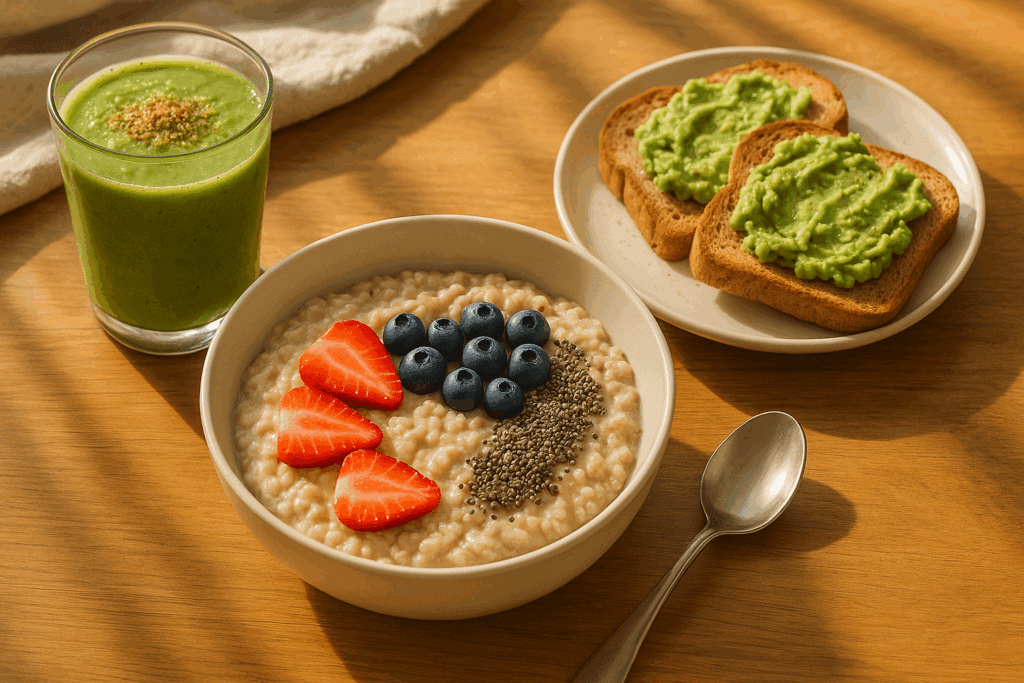
Best Fiber for Weight Loss: Identifying the Most Effective Sources
Not all fibers are created equal when it comes to supporting weight loss. While total fiber intake is important, certain types and sources have been found to be particularly effective in promoting fat loss and metabolic health. Viscous soluble fibers, such as glucomannan, beta-glucan, and pectin, are especially beneficial due to their ability to form thick gels in the gut that slow digestion and prolong satiety. These fibers are found in foods like oats, barley, legumes, apples, and root vegetables.
In contrast, fermentable fibers act as prebiotics, feeding beneficial gut bacteria that influence inflammation, fat storage, and insulin sensitivity. Examples include inulin and fructooligosaccharides, found in onions, garlic, leeks, and asparagus. Incorporating a combination of soluble, insoluble, and fermentable fibers creates a synergistic effect, supporting diverse aspects of digestive and metabolic health.
Individuals seeking to optimize their high fiber weight loss strategy may consider focusing on whole food sources rather than relying on fiber supplements. Although fiber powders and fortified products can provide convenience, they may lack the full nutrient profile and phytochemicals found in natural foods. Moreover, the act of chewing fibrous whole foods promotes satiety through sensory feedback mechanisms, further enhancing the weight loss effect.
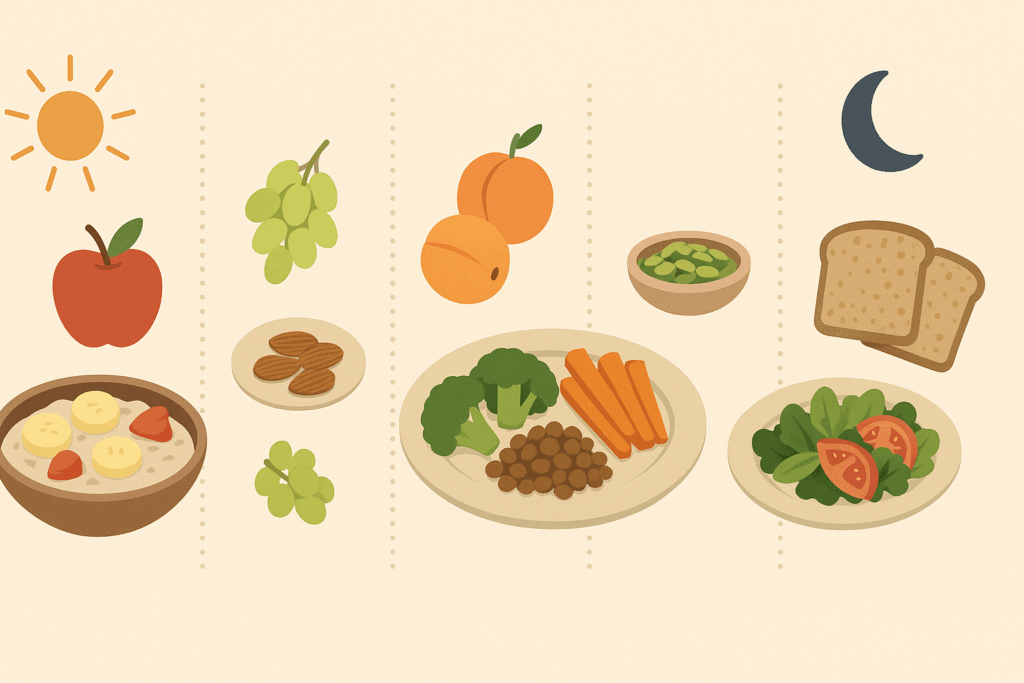
How Much Fiber Per Day for Weight Loss Should You Eat at Breakfast?
Breakfast is widely regarded as a pivotal meal for establishing metabolic tone and appetite regulation throughout the day. Including fiber-rich foods in the morning can prevent mid-morning energy dips and reduce the urge for high-calorie snacks. The question of how much fiber per day for weight loss should be consumed at breakfast hinges on both total daily goals and individual preferences.
For those aiming for 30 grams of fiber per day, allocating 8 to 10 grams at breakfast creates a strong foundation. This can be achieved through oatmeal topped with chia seeds and sliced fruit, a whole grain wrap with black beans and avocado, or a smoothie blended with flaxseed, spinach, and frozen berries. These meals are not only satisfying but also provide long-lasting energy and support digestive health.
Teens, in particular, are encouraged to eat around 16 grams per day, with breakfast offering an ideal opportunity to establish this baseline. By prioritizing fiber in the morning, individuals set a positive tone for balanced eating and appetite control for the remainder of the day. In doing so, they enhance their chances of achieving sustained weight loss and digestive wellness.
Fibre Good for Weight Loss: Reinforcing the Gut-Weight Connection
The statement that fibre is good for weight loss is more than a nutritional cliché; it reflects a growing body of scientific evidence linking fiber intake with adiposity, gut flora diversity, and hormonal regulation. Fiber’s fermentation in the colon produces short-chain fatty acids (SCFAs), which play a critical role in reducing systemic inflammation, improving insulin sensitivity, and modulating fat metabolism.
Moreover, diets high in fiber are often naturally lower in calories and higher in nutrient density, reducing the temptation to consume processed, calorie-dense foods. This indirect calorie control mechanism makes fiber a powerful ally in any weight management plan. Individuals who consistently meet their fiber targets are more likely to experience steady, sustainable fat loss without the need for extreme dietary measures.
Fiber also plays a role in emotional well-being and mood regulation, as SCFAs influence the gut-brain axis. Improved digestive comfort and regularity can reduce stress and enhance mental clarity, both of which contribute to better decision-making around food. Thus, the benefits of fiber extend beyond physiology to encompass behavioral and psychological factors central to successful weight loss.
How Much Fibre Should You Eat in a Day? Navigating Conflicting Guidelines and Finding Balance
With so many numbers circulating in health media, it can be difficult to determine how much fibre should you eat in a day. While general guidelines provide a useful starting point, they should be adapted to individual needs and goals. For those pursuing weight loss, aiming for 25 to 35 grams of fiber daily offers a broad range that balances effectiveness with comfort.
This range accommodates fluctuations in activity level, age, and dietary preference while preventing digestive distress that can result from abrupt increases. Fiber intake should be spread evenly throughout the day to maintain digestive equilibrium and optimize satiety. Focusing on a variety of sources ensures a broader spectrum of nutrients and a more resilient microbiome.
Despite the benefits, many individuals fall short of even the lower end of this range. National surveys consistently show average fiber intakes below 15 grams per day. Bridging this gap requires intentional dietary choices and often a shift away from ultra-processed foods toward whole, plant-based options. With awareness and planning, the transition to higher fiber living becomes both achievable and rewarding.
Frequently Asked Questions: High Fiber Diets and Weight Loss
How Much Fiber Per Day for Weight Loss Should Be Adjusted for Different Lifestyles?
While the standard recommendation of 25 to 38 grams per day works for many adults, it’s crucial to consider lifestyle variables when evaluating how much fiber per day for weight loss is appropriate. Individuals with highly active routines, such as athletes or manual laborers, may require more calories and, accordingly, more fiber to maintain digestive balance with increased food volume. On the other hand, sedentary individuals or those with limited mobility should be cautious not to overconsume fiber too quickly, as it may lead to gastrointestinal distress. People following high-protein or ketogenic diets may also need to modify their fiber intake to offset the lack of grains and legumes typically present in those diets. Balancing fiber intake with your unique energy demands ensures that dietary changes remain both effective and comfortable.
How Much Fiber Should Teens Eat for Breakfast to Support Energy and Metabolic Health?
Teenagers often face a unique combination of hormonal changes and intense academic or athletic demands, making fiber intake at breakfast particularly impactful. Nutritionists suggest that teens consume around 16 grams per day, and a fiber-rich breakfast should ideally provide one-third to half of that daily intake. For example, a breakfast with whole grain toast, a banana, and almond butter can set a positive metabolic tone for the day while supporting digestive health. Fiber at breakfast also slows glucose absorption, which stabilizes mood and concentration during school hours. Additionally, incorporating fun, teen-friendly recipes like smoothie bowls with chia seeds or overnight oats can help make high-fiber meals more appealing and sustainable.
Why Is 30 Grams of Fiber Often Considered a Gold Standard for Weight Loss?
Many dietitians recommend aiming for 30 grams of fiber daily because it’s an achievable benchmark that has been linked to consistent weight loss and metabolic health improvements. This amount strikes a balance between being effective and manageable without necessitating major dietary overhauls. High fiber diet for weight loss strategies based on 30 grams encourage eating more whole foods, which naturally displace less nutritious, processed options. Moreover, 30 grams of fiber daily can significantly influence gut microbiota diversity, which plays a crucial role in fat metabolism and immune response. Studies also indicate that people who reach or exceed this threshold tend to experience greater satiety and fewer cravings, leading to better dietary adherence.
What Is the Best Fiber for Weight Loss When Choosing Between Natural and Supplemented Sources?
While both natural and supplemental fibers can contribute to weight loss, natural sources tend to offer broader nutritional benefits. The best fiber for weight loss is often soluble and viscous, meaning it forms a gel in the digestive tract that slows digestion and extends fullness. Foods rich in these fibers include oats, lentils, apples, and psyllium husk. However, fiber supplements may be useful for people with limited dietary diversity or certain health conditions that restrict food intake. For sustained benefits, combining whole food sources with occasional supplemental fiber can provide consistency and prevent nutrient gaps.
How Does Fiber Help With Weight Loss When Combined With Mindful Eating Practices?
Fiber enhances satiety and moderates glucose spikes, but these effects are amplified when paired with mindful eating strategies. Eating slowly and paying attention to hunger cues allows the body time to register the fullness signals that dietary fiber helps produce. This synergy leads to fewer episodes of overeating and better emotional regulation around food. Mindful eating also encourages greater awareness of food choices, which often results in a natural preference for high fiber foods. Thus, integrating behavioral techniques with nutritional planning strengthens long-term outcomes for high fiber weight loss.
How Much Fibre Should You Eat in a Day When Managing Digestive Sensitivities?
For individuals with sensitive digestive systems, such as those with irritable bowel syndrome (IBS), how much fibre should you eat in a day becomes more nuanced. Soluble fiber tends to be better tolerated and may help soothe symptoms by forming gentle, non-irritating bulk. In contrast, some insoluble fibers can exacerbate bloating or discomfort. Starting with 16 grams per day and increasing incrementally allows for a personalized approach that balances comfort with benefits. It’s also advisable to diversify fiber sources and ensure proper hydration to aid smoother transit and microbial health.
How Much Fiber Daily for Weight Loss Should Be Split Between Meals and Snacks?
Strategically distributing your fiber intake throughout the day can help avoid digestive overload and maximize satiety. A good rule of thumb is to consume about 8 to 10 grams at each main meal, with an additional 3 to 5 grams from snacks. This approach allows for steady energy levels and prevents mid-day fatigue. Incorporating snacks like roasted chickpeas, sliced vegetables with hummus, or a pear with skin ensures that your fiber intake is both enjoyable and nutritionally rich. This balanced rhythm makes the high fiber weight loss process more sustainable in real-world contexts.
Is Fiber Good for Weight Loss in Individuals With Hormonal Imbalances?
Yes, fiber is good for weight loss even in individuals experiencing hormonal fluctuations such as menopause, PCOS, or thyroid imbalances. Fiber assists in regulating estrogen levels by binding excess hormones in the digestive tract and promoting their excretion. This helps balance the hormonal environment and may alleviate symptoms like weight gain, bloating, or mood swings. Additionally, fiber helps modulate insulin response, which is particularly beneficial for individuals with insulin resistance. For these populations, increasing fiber through leafy greens, beans, and flaxseeds can contribute to metabolic harmony and improved energy regulation.
How Much Fiber Per Day for Weight Loss Is Safe During Pregnancy or Postpartum?
Fiber needs often increase during pregnancy due to hormonal changes and the tendency toward slower digestion. However, how much fiber per day for weight loss is safe during this period must be assessed with care. Pregnant and postpartum individuals typically benefit from 28 to 34 grams per day, but the priority should be on digestive comfort and nutrient adequacy rather than rapid weight loss. Foods like lentils, pears, and quinoa not only provide fiber but also essential nutrients like folate and iron. It is also vital to maintain hydration and consult with a healthcare provider to ensure that fiber supports both mother and baby.
Can High Fiber Diets Lead to Nutrient Malabsorption or Other Side Effects?
While a high fiber diet for weight loss has numerous benefits, excessive intake without proper balance can interfere with mineral absorption, particularly calcium, iron, and zinc. This is more likely when fiber is derived mostly from bran or supplemented in large doses. To avoid this, it’s recommended to include a variety of fiber types and maintain a nutrient-rich diet with plenty of whole foods. Cooking vegetables can also reduce harsh fiber textures, making them easier to digest. Listening to your body and adjusting your intake accordingly ensures that you gain the advantages of dietary fiber good for weight loss without compromising nutrient absorption.
Conclusion: Achieving Sustainable Weight Loss with the Right Fiber Intake
In the realm of holistic health and gut-centric wellness, fiber emerges as a foundational nutrient that supports far more than digestive function. Its role in metabolic regulation, appetite control, microbial diversity, and inflammatory balance positions it as a critical ally in the pursuit of healthy weight loss. Understanding how much fiber per day for weight loss is right for you empowers informed choices that are grounded in scientific evidence and personalized needs.
Rather than viewing fiber as a singular strategy, consider it part of a broader lifestyle shift toward mindful eating, whole foods, and digestive care. A high fiber diet for weight loss is not only effective but also enriching, offering a pathway to improved energy, resilience, and long-term wellness. By making fiber a consistent part of your nutritional landscape, you honor your body’s innate wisdom and pave the way for a more balanced, vibrant future.
Further Reading:
Making one change — getting more fiber — can help with weight loss

